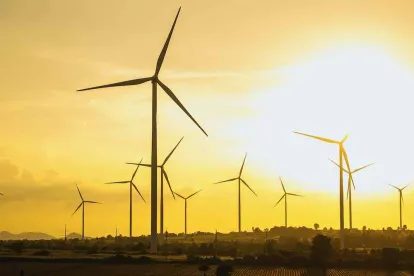Late Wednesday evening, Senator Manchin released the closely guarded text on his proposal to reform domestic energy permitting. This legislation was the subject of a handshake agreement between Manchin, Senator Schumer, Speaker Pelosi and President Biden for his vote on the Inflation Reduction Act.
Part of that agreement was to include the permitting reform package into the short-term government funding bill, or continuing resolution (CR), which needs to pass both chambers and land on the President’s desk by September 30 to avoid a government shutdown. Monday evening, the text of the CR was released which included Senator Manchin’s proposal with the exception of the Clean Water Act provisions which were included in the previously released draft text. If it fails to attain the 60 votes to proceed, there are procedures that the Senate can take to bring up and pass a clean CR without the proposal.
Senator Manchin’s proposal, coined the Energy Independence and Security Act of 2022 (proposal), includes nearly 100 pages of text amending the permitting processes under the National Environmental Policy Act (NEPA) and the Federal Powers Act which governs the Federal Energy Regulatory Commission (FERC). The proposal also expands the authority of the Federal Permitting Improvement Steering Council (FPISC) created under the Fixing America’s Surface Transportation (FAST) Act.
NEPA
The proposal contains significant changes and updates to the NEPA process with intent to expedite environmental reviews for major energy projects. These provisions include:
-
requiring the designation of a lead federal agency for coordinating the NEPA process for a project;
The designated lead federal agency would be responsible for preparing one single environmental document for the proposed action, setting the schedule for review, and coordinating with other applicable federal agencies.
-
setting a two year target for NEPA reviews for major energy projects that require a full environmental impact statement and a one year target for projects that only require an environmental assessment;
A “major project” is defined as a project where multiple federal actions are required.
-
establishing a dispute resolution process where federal agencies, governors of a state in which the project resides, or project sponsors may request a dispute resolution meeting which must be convened within 30 days of the request;
-
mandating a 150 day statute of limitations from the date of publication for litigation of a final NEPA document;
-
requiring federal agencies to identify existing categorical exclusions that may be used to expedite project review;
-
establishing a process in which certain federal agencies identify new categorical exclusions and solicit input from project sponsors on possible new categorical exclusions; and
-
requiring the President to identify 25 “energy projects of strategic national importance,” and to issue an executive order prioritizing the NEPA process for those projects.
FPISC
Established in the FAST Act, FPISC is a coordinating agency intended to create a more transparent and efficient federal environmental review process for energy and infrastructure projects. Much of this work is currently done through the development and adherence to publically available permitting timetables for specific projects. In order for a project’s review process to be managed through the FPISC, project sponsors must apply to be a covered project.
The proposal amends the authority of FPISC by including critical mineral projects to the list of eligible project types under the FAST Act and reducing the minimum cost threshold for eligible projects from $200 million to $50 million. The proposal also mandates that the Department of the Interior’s five year oil and gas leasing program be a covered project.
FERC
There are a number of revisions to the Federal Powers Act in the proposal to expedite the review, permitting and licensing process undertaken by FERC for energy projects under its purview. Many of these revisions are to spur the development of regional and interstate electricity transmission lines. There is also language that would allow the Department of Energy to deem a transmission project under review by FERC to be in the “national interest.” This would allow FERC to expedite the permitting of such projects. The proposal also allows the federal government to exercise eminent domain over state controlled lands.
The proposal also grants FERC the jurisdiction to regulate interstate hydrogen pipelines and requires all applicable federal agencies to finalize permits and approvals for the Mountain Valley Pipeline which would transport natural gas from West Virginia into Virginia.
It is not yet clear if or how Senator Manchin’s proposal will advance to President Biden’s desk. However, on September 12, 77 House Democrats sent a letter to Speaker Pelosi and Majority Leader Hoyer opposing any NEPA permitting reforms in a CR or any end of year package. In addition, since the release of the proposal a number of Senate Republicans and Democrats have stated their opposition to the permitting reforms – albeit for different reasons.
While its fate may still be unclear, the proposal has elevated the bipartisan, bicameral desire to look at the federal review and permitting process for domestic energy and transmission projects. Stakeholders should capitalize on this opportunity to advocate for specific changes to these processes to expedite permitting for projects that they are, or are intending to, pursue.




 />i
/>i
